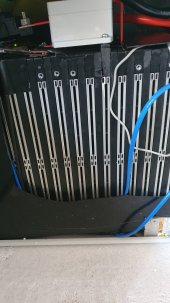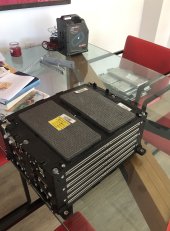Hi.
I got me a batterypack ,- 24v 6.3kw li-ion. 3p 7s . They are 3.7vx90A/cell i think.
The seller could not say what model or type the cell is.. but its from a ev/hybrid car.
he just had the charger parameters; bulk- 28.7 v (4.1v/cell) . I planning to rebuild the battery box, and replace the old bms with a new qucc bms. But before i start, i will find the cell model so i get all the parameters right. . The cells are aprx 40cm/16" high , 30cm/12" wide, 2cm/0.8" thick.
Enyone seen a cell like this before?
Not so good quality photo, i cut of some of the plastic covers. The pic is from the side.
Runar
I got me a batterypack ,- 24v 6.3kw li-ion. 3p 7s . They are 3.7vx90A/cell i think.
The seller could not say what model or type the cell is.. but its from a ev/hybrid car.
he just had the charger parameters; bulk- 28.7 v (4.1v/cell) . I planning to rebuild the battery box, and replace the old bms with a new qucc bms. But before i start, i will find the cell model so i get all the parameters right. . The cells are aprx 40cm/16" high , 30cm/12" wide, 2cm/0.8" thick.
Enyone seen a cell like this before?
Not so good quality photo, i cut of some of the plastic covers. The pic is from the side.
Runar
Attachments
Last edited:






